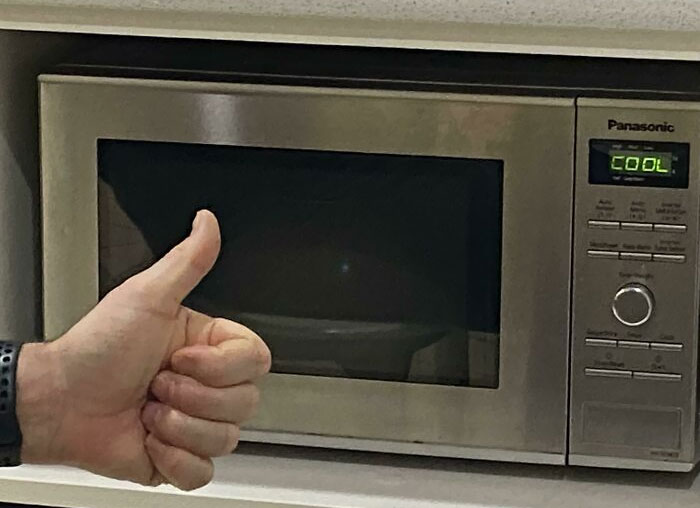I think British style plugs are the best despite their bulkiness. For one they are easily fixed and are designed to be so.
If you don’t know what I’m talking about watch this: https://youtu.be/COWlYUvzgZI
I’ll for repairability but the plug isn’t usually what breaks.
If you want a bulky replaceable plug, you can get those at any hardware store. Meanwhile I’ll take the smaller more reliable, more durable and waterproof molded plastic plug
idk i think our aussie plugs are a good middle ground: they’re about mid way between UK and US in size, are not reversible, don’t have a fuse (but laws govern the type of current things can handle: extension cords MUST be 10A which covers a standard 10A home circuit - i believe there’s some extra built into the rating too), power boards the same, and have a 10A safety switch built into them which prevents daisy chaining over the current just like the fuse
repairability probably not so good, buuuuut i’ve never had a cable break so maybe we do something different with the construction that solves that need?
Interesting rabbit hole to drill down into ……
I see the Aussie common plug and similarity to other countries. The picture shows partly insulated prongs which is a great safety feature I’ve never seen before
I don’t know whether it’s physically the same size but that’s 240v and US had similar variations at that voltage
Simple US plugs are also not (usually) reversible. Historically they weren’t but the standard changed decades (half a century?) ago to support polarized plugs with one blade wider than the other. If it matters, such as a light switch, the plug must be polarized and can only fit in one direction. For some things, like a sealed power supply it doesn’t matter
There’s always ancient outlets and ancient plugs that never got replaced but those are getting rare
I mean, they’re right. It does sound really stupid
Average American voter?
They were right.
It does sound really stupid.
Would be great if an equally clueless European followed up with
“So I visited your country and remembered seeing this post but when I got there, none of my stuff would fit in your outlets. What the fuck?”
deleted by creator
I’ll be choosing an inverter soon. In the US, but considering a 240v just for the kettle.
Steam irons heat faster too, you know, just in case you need to iron your fancy shirt in a hurry before you leave, not that that would ever happen to me or anything…
Btw do you have a big solar array or what is the inverter for?
Yea, big steamer vs iron fan here. This will be for a van. A while back we aquired a mini van and through the magic of DIY it now has no back seats, a couch+bed, fold up kitchen and running water. We are very outdoorsy and like cheap travel, so we are doing some planning for potential next/future stage of life in something that could replace structural living 😉
You’ll need a massive battery and inverter to boil a kettle, that’s a lot of energy.
No more than a pot on induction. Or for that matter, no more than with propane, or friction, or pressure, or with a mini-sun. Takes the same amount of energy regardless hah.
Speaking of which, this is a pretty cool tool: https://www.omnicalculator.com/physics/water-heating
So for 1 liter in my case, a 2K watt inverter woth 80% efficiency across the system would take under 4 minutes to boil.
That’s 25AH of capacity on a 12v system though, so quarter of the capacity of a 100ah battery, if I’ve done my math right.
Take the adapter off, moron.
Someone from Germany or France or one of the other States should do that to take the piss.
/s
The Type I plug was developed by the US government but blocked in Congress during the FDR administration by the Republicans and southern Democrats on the basis that it was a change from the multiple different outlets being used at the time. The 3 core plug didn’t become standard until 1965.
We simply use travel adapters.
Not do we need a “special adapter” but a converter as well, as Households in the US use 110V opposed to the usual 230V.
For most things people bring on vacation it wouldn’t be a problem since chargers and power supplies can run on multiple voltages. It’s for things like hairdryers where you need converter. Since they are calibrated for a specific voltage to create heat. Though you could probably run them at half settings on the double voltage.
Oh don’t worry about that, just plug in your 110V appliances and watch them run twice as fast
When I was 17 my father brought back a stereo from Japan. I was too eager to use it and plugged that directly to 220. It worked for a glorious 2 minutes. We got it working again after we replaced the transformer. Still have it and it still works fine to this day. Learned a lesson too!
Houses in the US generally have 220v too but not at ordinary wall outlets
There’s a technology connections video on it if you’re interested in the specifics
There’s a technology connections video on it if you’re interested in the specifics
Exactly :)
See also any ElectroBOOM video where he travels. Though they’re a very different kind of content.
Why?
Because he makes videos about technical details like this.
And don’t call me Shirley.
A few years ago there was the possibility of me moving to the US from Germany and if I would have bought a house there, I would probably have installed additional Schuko-outlets all over the place.
Yes and in Europe houses generally have 400V too but not at ordinary wall outlets
Oh this gets stranger.
It’s usually 120v, but I’m not going to split hairs over 10v.
So, 120v is not a voltage that is delivered from the grid… Technically speaking. Each home is given one circuit of 240v, which is usually part of one leg of a three phase, coming off of the Transformers… 120v is there because they center-tap the transformer. This halves the voltage by consequence. Inside the house the circuits are generally laid out to try to balance the load between each half of the 240v phase.
The idea is that two 120v loads, put in series, will total 240v. So power will ideally go from L1 to a 120v load, to “neutral”, then over to another 120v load, then finally back on L2.
More or Less.
120v is basically just half of what you should be loading the system with.
The center tap neutral from the transformer is to collect any load imbalance between L1 and L2 to allow for the two “sides” of the phase to be out of balance and still work.
The US “plug” ( aka receptacle ) is a NEMA 5-15R, or NEMA 5-20R (for 20A); these are designed for 120v operation using the half phase described above. Of course, you can mis-wire it and make all kinds of dangerous abominations if you so choose. There is, however, a less known NEMA 6-15R and NEMA 6-20R that is basically the same, but for 240v operation, replacing the neutral wire with L2 instead (and 15/20A respectively).
So it is entirely possible to have 240v outlets in a North American home, while still being compliant with code.
It’s actually really fascinating information when your dig into it.
i hate that all that’s a thing for you
What’s a good resource for learning about electrical engineering for people starting from nearly zero knowledge? I’d love to learn more so I don’t burn my house down if I want to, say, replace a light fixture in my house.
I’m not an EE. I apologize if I gave that impression. I just have an obsession with understanding anything I use on a regular basis, whether computers, smartphones, electricity, vehicles… Anything that does stuff, and I use it, I want to know how it does the thing that it does.
I’m weird like that.
I learned a lot from “Electrician U” on YouTube, along with a few others. Maybe worth a look. The scientific/physics side of things was more from watching other YouTubers (as to why it behaves the way it does), along with a fundamental knowledge that I learned from doing amateur radio stuff. Working in IT and having to deal with the power requirements of systems and making sure that we won’t blow a breaker under load… That helped motivate me to learn.
It all came to a head when we were deploying a network and server for a business that was still in construction of the facility. The electrician was going to run a temp line for our stuff so we could set up and be ready for opening day, and he asked how many amps we needed… I did a bit of a deep dive to figure out an answer for him, and I’ve been learning more and more since then.
Cool. Thanks for the direction. I’m curious about electrical stuff, and I’d like to be able to do some things around my house. There’s some DIY stuff online, too, involving building projects from old parts of appliances that interest me, but I realized quickly that I’d need some very good knowledge about electrical work to stay safe. It’s unlikely I’ll actually pursue the latter, but I’d like to at least know the how and why of my home wiring.
My recommendation is to maybe get some electrical safe tools, possibly some gloves that insulate against shocks, but definitely a good non-contact voltage detector, or NCV.
Check the circuit with your NCV before turning off the power, before working on the things on the circuit, and after turning on the power when you’re done (before you switch anything on). It helps keep you and your house from halting or catching fire.
… And always connect ground wires first.
Good luck.
It’s less of a problem nowadays where most things have switching power supplies that can handle either just fine
deleted by creator
Relevant exchange from Suicide Squad (the good one with Idris Elba and Flula, not the bad one with Will Smith and Jared Leto)
I dated someone who in earnest believed she has no accent. She didn’t understand what could be wrong about that.
People in other countries use all sorts of crazy “languages”. We don’t bother with that here, we just talk normally.
Language proficiencies: Common
Galactic Basic
Why can’t people just be normal. I am being my normal self, but other people seem different. Bastard freaks.
I moved to California last year from Oklahoma. Occasionally I will say something about moving from Oklahoma and people are like, “oh that makes sense, you have a Midwestern accent sometimes”. We all sound normal to ourselves but everyone has an accent. Like the way California people say their O’s.
Like the way California people say their O’s
As a Canadian, it’s all I can hear when they speak.
So, I’m from Seattle, basically, and for the longest time I thought no, I do not have an accent.
Then I learned that the reason I thought that was because well, the accent I have is basically the least distinct from the ‘General American English’ or ‘Region Indistinct American’ accent, out of all other regional accents…
With that ‘General American’ accent being what nationwide newscasters, voice actors and movie stars either developed on their own, or were trained into, for being easily intelligible to any other American accent/dialect speaker, or as just sort of a rounded approximation of ‘American’, with no specified regionality to the character.
Thats not to say the PNW or Cali or just general US West accents are all exactly the same as ‘General American’… they are not… its just that they are the least difficult to understand from a general audience perspective out of other regional US accents/dialects… or at least that is the explanation I’ve heard.
As I am aware, the main difference between PNW/Cali English and other US regions is that we have completed the cot-caught merger. Absolutely no difference in pronunciation, the verb sounds are the same… whereas in much of the rest of the US, these are different, distinct vowel sounds. We just use the ‘cot’ pronounciation for both.
Bot cot thot slot thought caught fraught not spot dot.
All the same. No rolling or bending of the first vowel into the u to make a more complex vowel sound, all just ‘bot’ or ‘dot’.
That and pop vs soda vs coke.
For whatever reason, I usually say soda, but that did make me an oddball of most people around me near Seattle saying ‘pop’… but a lot of other places in the US use soda, but also a lot of other places use ‘coke’ to refer to any … soft drink… which confuses and aggrevates my Autistic brain lol.
…
There are a few things that I remember being distinct to Californian accents/dialects as compared to Seattle:
One is the rising tone at the end of the sentence… thing.
I always called this a valley girl accent, and this is because no one I knew as a kid spoke that way… unless their family had recently moved north, from Cali.
Now though, it is more common generally in the PNW, at least in my own experience… but also that could literally be because a lot of Californians have migrated north.
Another silly, but super easy tell someone isn’t from Seattle: Their accent may be essentially indistinguishable from a PNW accent… but they always, always refer to I-5, as ‘the 5’… instead of ‘eye-five’.
No one born and raised near Seattle does this.
I-5 is the main highway that goes all the way down from Vancouver BC, through Seattle, Portland, San Fran, LA, and runs through all of those cities, so its a major reference point of conversation in all those places.
And yeah, the regional vocab difference for how people refer to it is an example of a difference.
I have a hard time understanding the people in a freinds village and he lives 50km away
I guess it makes sense. I wouldn’t understand you either from 50km away.
Lemmy: We’re just a bunch of dads
And Linux nerds.
Midwesterners are the only people I’ve ever met who don’t think they have an accent. And I’m like “you have a midwest accent.” They’re stunned because to them it’s just a “normal” accent, and they know it must be so because it’s what the TV man talks like. Obviously I know midwesterners who know they have an accent and the TV man is trained to speak that way. But everyone else I meet and know knows their own accent and can recognize variations of it. They’re not so conscious of how they make their accent happen, obviously, since it is their own. But they know they sound different from other people
Part of that is, out side of a few regions of the Midwest that have a really unique accent.
Most of the Midwest is “nutural English”. Yes there’s an accent, but there is a huge lack of slang, regional quirks, and is widely one of the most understandable accents across every English speaking country.
It’s the “universal English accent” in a sense. It’s a large reason why call centers became so popular there. That and low costs.
Functionally Midwestern accent is in a way the English that’s so boring that the banality of it IS the accent. Lol it’s kinda funny.
It’s the “universal English accent” in a sense.
… for American English
No even when polled, British, Australian and Canadian find it easier to understand when spoken over the phone. When compared to any accent other than their own.
Again it’s the reason it’s the most commonly used accent when you need a one size fit all solution and you can’t get a local accent for every region your servicing.
When compared to any accent other than their own.
Yes…? Are you struggling with the concept of an agnostic accent? I’m talking about call centers here after all.
There are even converters that will switch single phase 120 to 3 phase 240
That’s a “converter” in the same way an ejection seat is “a chair”.
3 phase? Think about that for a minute. That’s going to be one fancy ass convertor.
A simple transformer can convert 120 to 240 easily, but 3 phase is a whole nother thing, you know. Or maybe you don’t know.
No need for me to think about it. I own such a converter. Had to get it to power a chinese-made 02 generator that did not have a switch to go to single 110
The funny thing is only the UK plug design is any good, all others are so much worse they should just give up and go home.
Stand on one pointing up and tell me it’s good.
This is anti Australian rhetoric and I will not stand for it. You are all beneath us in plug game, UK included
According to Electroboom Australia is doing it right too.
Sounds like a presidential test for those of presidential age.
No-one going to mention that they said countries and named two continents?
Because it reads like this:
“In other countries, like [those in] Europe or South America”.
No it doesn’t
Coming from a 'murican, it’s safer to assume they can’t name a single country when given a map
Read it again, d’you really think the same person who wrote that genuinely knows Europe isn’t a country?
I didn’t realize because I am too used to it.
At least they knew it was going to sound stupid.
Your electronics blows up under EU mighty 240v power lines















